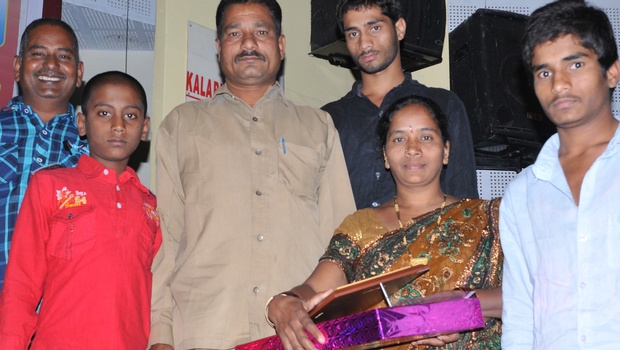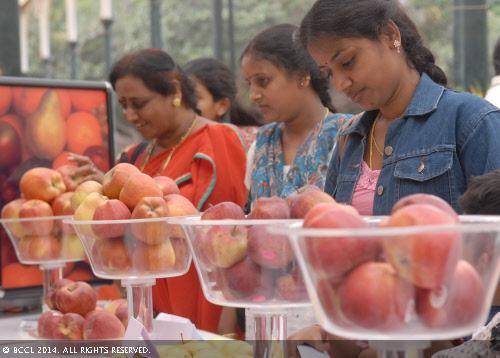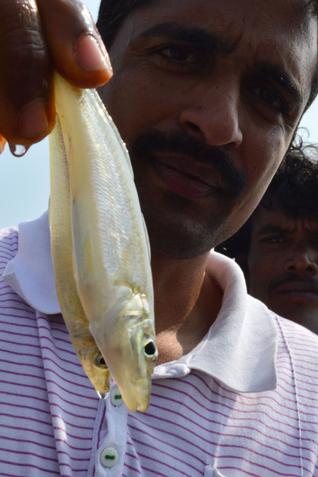The Andhra Pradesh State Biodiversity Board (APSBB), which finally gave green signal for the rare recognition, has sent its recommendation to the National Biodiversity Board, which has approved the proposal making these villages to become first villages in India to be recognized as ABHS.“The file is now with the agricultural department. By the end of January we will announce these villages as ABHS with or without their opinion,” a determined APSBB Chairman Dr R Hampaiah says. Thus, the dryland villages in four mandals and the 5,000-strong women farmers of the Deccan Development Society (DDS) that grow only “forgotten millets” without fertilisers or pesticides will join the list of 27 such other sites around that world by February.
“Nowhere in the world 60 different varieties are cultivated in 30,000 acres and the seeds are distributed among women farmers, assuring food safety and saving the environment,” says Dr SN Jadhav, Member Secretary, APSBB.
The 500-year-old banyan tree in Pillamarri tree spread on three acres of land in Mahbubnagar district and the rare forest on Tirumala hills are the other two sites in Andhra Pradesh that have such special recognition.
In fact, a few months ago, three members from the Board—Anisetty Murthy, Ashok Kumar and Hampaiah– had visited the farms to see the amazing agricultural biodiversity that was being conserved and propagated by the women of DDS.
The announcement added vigour to the 15th edition of biodiversity festival in Algole, a small village in Zaheerabad mandal in Medak district, from where a month-long bullock cart caravan yatra begins and tours 70 villages in all the four mandals of the heritage site, encouraging people to adopt forgotten crops.
“We are now trying introduce the concept in 18 other states in the country. The DDS even had its impact in Africa, where women are trying to take back farming from the hands of commercial organisations,” added DDS Director PV Sateesh.
While agriculture in other parts of the country was in doldrums, the sangham farmers were completely self-reliant as far as food, seeds and farming are concerned. When farmers elsewhere were facing the indignity of having to stand in long queues to access government supplied seeds, women of the DDS were staking their claim to the elusive mantle of food sovereignty.
Women of the DDS also succeeded in drawing the attention of the government to the need for including millets in government food programmes like PDS, the mid-day meal scheme and so on; the spate of orders asking for the inclusion of millets in these schemes is a testimony to the extent of success of the women of the DDS.
Some women farmers of the DDS also can handle the latest version of digital camera, the daily narrow cast of the Sangham FM radio and help save bio-diversity by cultivating forgotten millet crops with equal élan. Women camera operators of the Community Media Trust (CMT), probably the only such media house in the country, can handle, shoot, edit and produce short films without any outside help.
The initial toil and success of women was then presented to the outside world through photos and then videos. Then came the launch of the CMT, which has been winning several laurels for its amazing media work over the last decade.
The CMT runs a women’s video collective (WVC) and the first-ever community radio of India called Sangham Radio. While the WVC has been functioning since 1996, the Sangham Radio took up Narrowcasting since 1998 and has been on the air since October 2008, broadcasting two hours every day. Both these outfits are managed entirely by women from farming communities.
Chinna Narsamma, a small farmer who made a film “Community Conquers Hunger”, said that the sanghams were the first group in India to have started 100 days of employment for the poor, which preceded MGNREGA by 20 years.
Summer employment
Through this employment programme which they called summer employment, they brought over 5,000 acres of near fallow lands under cultivation, produced more than a million days of employment in 30 villages in 10 years and started producing over 20 million kg food every year. This was the first step in abandoning hunger in their sanghams.
Zaheerabad Punyamma added that the sanghams started leasing lands and launched collective farming groups on these leased lands and produced additional food for their families.
In two decades, the sanghams have leased more than 1,000 acres of land and produced over half a million kg of food for their groups. Dandu Swaroopamma, a community filmmaker and a member of the DDS Food Sovereignty Trust said that the sanghams have brought over 4,500 acres of cultivable fallows under cultivation and produce nearly a million kg or more food every year.
They have done poverty mapping of their villages and identified over 10,000 families as recipients of their jowar-based millet rations. Each family has received a ration card through which they can draw between 10-25 kg of jowar every month depending on their poverty status. The jowar is sold at 25 per cent of the market price to the identified poor.
Begari Laxmamma, a community filmmaker and a community seed keeper, pointed out that all these villages have their own community seed banks from which any farmer can borrow nearly 50-80 seed varieties. Thousands of women in these villages have their own household seed banks and never depend upon outside seeds. Thus these villages have become seed sovereign.
Thammali Manjula, filmmaker and a coordinator of the Community Food Sovereignty programme, says “Our films have nothing dramatic but depict our lives and it’s about how we conquered hunger.”
J B S Umanadh in Hyderabad
source: http://www.deccanherald.com / Deccan Herald / Home> Special Features / by JBS Umanadh in Hyderabad / January 19th, 2014



